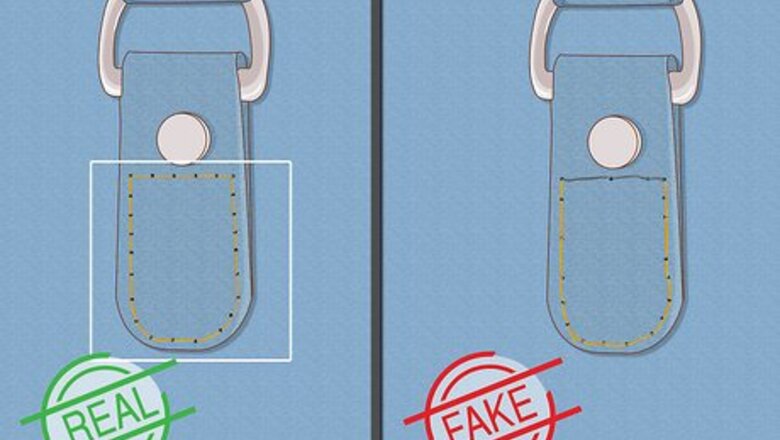
views
- Look for heavy leather, smooth zippers, and pristine lining are all to be expected. In general, designer purses will be of the highest quality.
- Check for a bag's code. A lot of the time, purses will also have a unique code printed on the purse, which can be checked online with code checkers.
- Buy firsthand from a seller, because that's the best way to avoid getting scammed.
Inspecting the Quality of the Bag

Look out for sloppy, loose, or jagged stitching. Slanted and uneven stitching is a sign of a poorly-made, fake bag. When you’re looking at a designer bag, the stitching will always be high quality. For the designer to keep a pristine reputation, they have to consistently sell quality products. Make sure to check the stitching on the inside of the bag too. Some fakes hide their sloppy work inside.
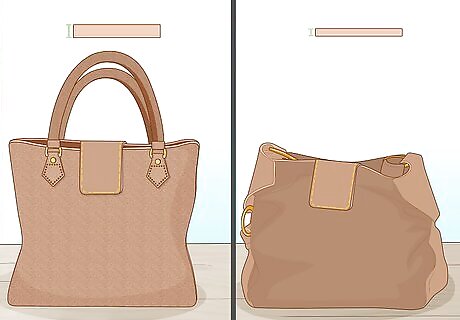
Inspect the purse's leather and lining. Smell the bag you're considering purchasing—if it's made of leather, it should smell like leather. Then, give it a quick lift; leather bags will be pretty heavy. If you notice that the bag is very light and flimsy, then there's a good chance that it's fake. A real designer bag will be lined, often with polyester, nylon, or cotton material. For reference, lining is sewn on the inside of the bag's outer shell. If the bag's lining is sloppy, bumpy, or loose, then there's a good chance that the bag you're considering is a fake.
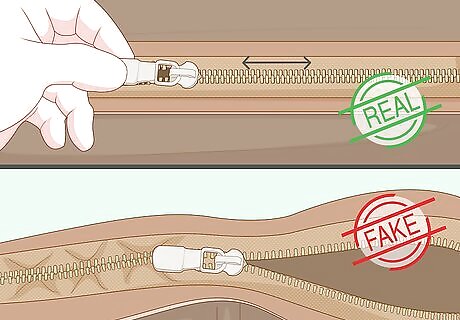
Check the functionality and quality of the zipper. The zippers should zip very smoothly, and feel heavy and of high-quality. Zip your bag's zipper all the way up as a test. If the pull falls off quickly, the bag's probably fake. Or, if the zipper feels light and flimsy, that’s a bad sign too. Usually, the underside of the zipper pull will have a logo. Many handbag manufacturers use the same high-quality zipper manufacturer on all of their bags. So when in doubt, check for this as well! Balenciaga, for instance, typically uses zippers with "Lampo" printed on the back.
Checking for Designer Details
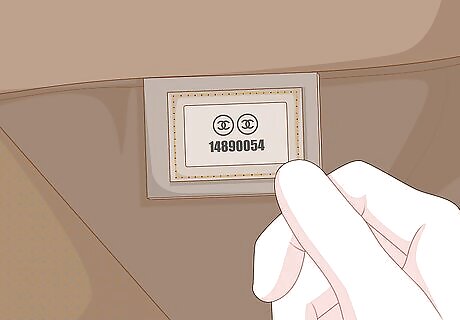
Examine the bag for brand tags, authenticity labels, and serial numbers. Check to see if your bag has an inside tag with a brand name and a serial number on it (because almost all authentic purses will). The inside tags should be hand-stitched or stamped into the leather. In some cases, designers also include authenticity labels on the outside of the bag. Chanel actually comes with a physical card separate of the bag, which has a 6-number serial code. Some fake bags may have authenticity tags, but the text will be in a different font and size than the original. These numbers are sort of like a passport or license—they give one bag a unique identity, making it way harder to replicate. If your bag is missing one, that’s a red flag! A lot of the time, these codes can be searched online with code checkers. This is a great way to tell if your bag is fake, but not an effective way to be sure that it's real (because even though it's hard, codes can be replicated by scammers).
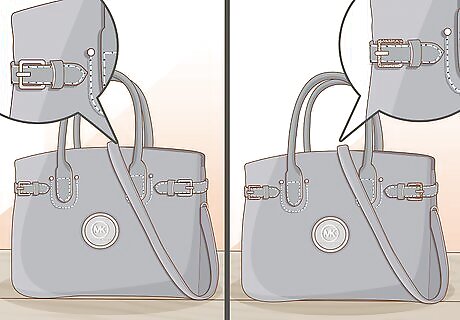
Look for designers' signature hardware (it's usually consistent in color and finish). Check the clasps, buckles, and other hardware on your bag—it should all be made of the same metal, and that metal should have the same color and finish (the exception to this is Chloé bags, which might use a variety). The hardware should be heavy, feel smooth, and be of high-quality. Real designer bags’ hardware is metal, while many fakes use plastic. Unlike plastic, metal hardware will absorb heat or cold. So quickly feel your bag’s hardware—if it’s been sitting out in the sunshine, is it hot? If it’s been in an air-conditioned room, is it a little chillier?

Check that the bag's logo looks exactly the same as the designer's logo. Fake manufacturers might spell the designer’s name slightly differently, such as Carter instead of Cartier. Or they might use different letters in the bag charm. Take a close look at your logo and google standard logos for the designer, then compare. If you notice a difference, then this means you’re buying a legal knockoff—but a knockoff nonetheless. For example, fake Michael Kors bags often feature an "M" charm instead of "MK" hanging from the handle. Meanwhile, fake Yves Saint Laurent bags often have an "SL" charm instead of "YSL."

Compare the bag to a picture of the same bag on the designer's website. Look up a picture of a genuine designer bag using the product’s name or code and compare it to the bag you're inspecting. Look for slight variations in color and design. If you've already purchased the bag and are trying to determine if it's fake, you can bring it into a designer store and compare it to the ones on display. Use these brand-specific guides for even more help: Checking Louis Vuitton purses. Checking Coach purses. Checking Michael Kors purses. Checking Furla purses. Checking Prada purses. Checking Versace purses. Checking Vera Bradley purses. Checking Ralph Lauren purses.
Shopping for a Designer Bag
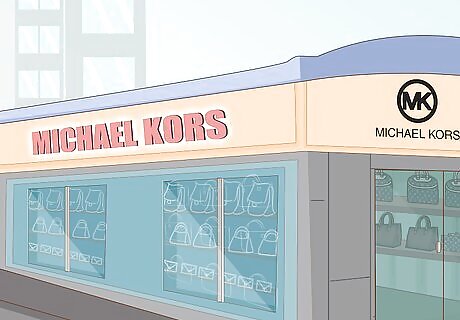
Go to a brand-name store for designer bags. Luxury department stores are always going to sell genuine items, it’ll be no question. If you have specific questions about the bag’s pedigree and quality, the staff should be knowledgeable. And while the bags in these stores may be expensive, you're paying for lifelong quality. If you want extra security, ask if there are any certificates of authenticity accompanying the bag. If you have plans to sell it second-hand down the line, this'll also help you prove that you're not a scammer to future buyers!
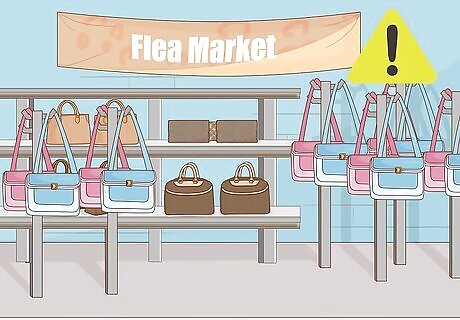
Avoid flea markets and street vendors. Designer labels don't authorize street vendors to sell designer bags on the street, so those bags are all knock-offs and fakes. It would be a rare find for somebody to sell their old designer bag at a flea market, and they're far more likely to be selling a fake. Know all you can about designer bags if you're purchasing from estate sales, thrift stores, or online auction sites.

Be realistic about the price of a real designer bag. Designer bags cost a lot of money because they are well-crafted status symbols. If the price is too good to be true, then the bag is usually fake. The exception to this, again, is an authentic second-hand bag. Note that if you're okay with buying a legal knock-off, you're not paying for the status or quality. Therefore, you shouldn't accept a high price. Ask the vendor if the bag is real, a copy, or a fake. Sellers who avoid answering questions have something to hide.
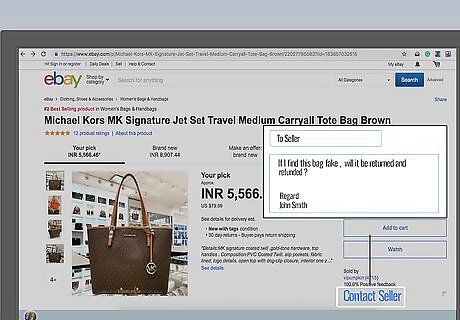
Get a refund if you bought the bag on eBay or Facebook Marketplace. If you find that you've purchased a fake designer bag online or from an unofficial vendor, there's not a lot you can do the seller for a refund. However, if you buy from a second-hand site with a scam protection policy (like eBay and Facebook Marketplace), you may be able to petition for a refund. Reach out to the seller first, and if they refuse, contact the site.



















Comments
0 comment